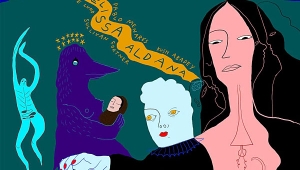| Columns Retired Columns & Blogs |
"A piece of recorded music is no longer associated with a physical object, so it has no existence in space—no geometry, shape, or form that interacts with the music."
I am seeing new relationships between a piece of music and visual geometry. All my music is on my server in a rather arcane file structure based both on content and date but I engage with it via multiple views on my large video monitor (not a smart phone or tablet).
In some views, I see music in the context of the history of its acquisition which relates it to the season of life when I bought it. In others, it is presented in the company of music of similar genres, performers, composers, etc.. In still others, it appears in what seems like random company but, being based on underlying sort algorithms, it usually suggests new relationships as I play from one "album" to another. Even the checkerboard patterns of album art provoke surprising plans of what to play next.
Unlike the fixed linearity of shelved albums of any physical format based on any single sorting plan, I am stimulated by the multiple perspectives on my collection. New additions make the views dynamic as they distribute into and disrupt the views. It also reduces the number of rarely played albums lost to memory or simply misfiled since they will keep popping up on the screen. I truly believe that I would not get as much joy and satisfaction from a physical collection even though I miss holding an LP cover and reading the very legible notes. It's a trade-off but I am very happy with my choice.










































